
[2023] 24 Recommended Autumn Foliage Light-Ups in Kyoto


Kyoto is one of the most famous places in Japan for autumn foliage. Even if you have already visited such places as Tofukuji Temple, Kiyomizu-dera Temple, and Eikando Hall once before, there are still places famous for their autumn foliage that will impress you again and again with their overwhelmingly beautiful autumn foliage. We hope you enjoy your visit in the refreshing autumn weather.
Sanzen-in Temple in Ohara, Kyoto, is one of the five monasteries of the Tendai sect of Buddhism, and is said to have been founded between 782 and 806 (Enryaku era) by the great Buddhist priest Saicho, known as "Enryu-bo," in the south valley of the east pagoda, one of the sixteen valleys of the three pagodas on Mount Hiei.
The leaves usually change color from mid to late November, and the maple trees in the garden on the temple grounds turn brilliant colors. The sight of red and orange leaves falling on the moss is exceptionally beautiful.


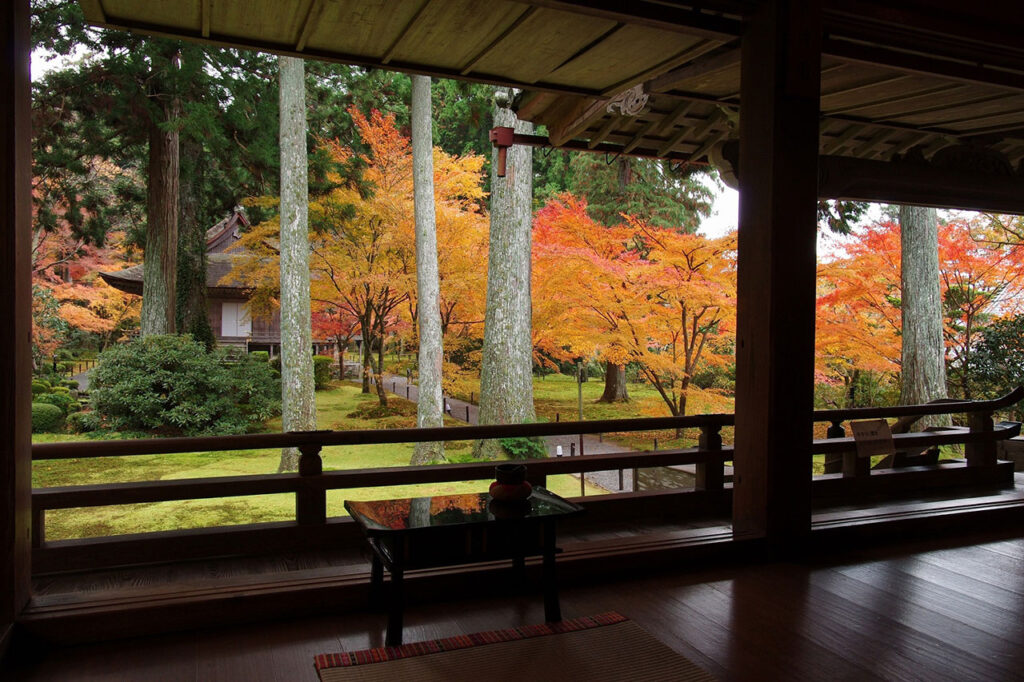

Best time to see/usually mid-November to late November
Autumn Special Viewing "Maple Festival
Special fall viewing period: October 28 (Mon.) - November 28 (Thu.), 2024
Hours of admission: October 9:00-17:00, November 8:30-17:00
Admission/ Adults 700 yen, Junior and senior high school students 400 yen, Elementary school students 150 yen, Free for infants
[Normal visit]
Hours of admission/9:00-17:00 (November/8:30-17:00, December-February/9:00-16:30)
Admission fee: 700 yen for adults, 400 yen for middle and high school students, 150 yen for elementary school students
Tofukuji Temple is the head temple of the Tofukuji School of the Rinzai Sect of Zen Buddhism and boasts a magnificent temple complex.
From the Tsutenkyo Bridge in the precincts of the temple, which is also known as a famous autumn foliage viewing spot, visitors can see magnificent autumn foliage that looks like a sea of clouds from mid to late November. The valley, dyed in a variety of red and yellow colors by approximately 2,000 Iroha maples and maple trees, is breathtakingly beautiful.


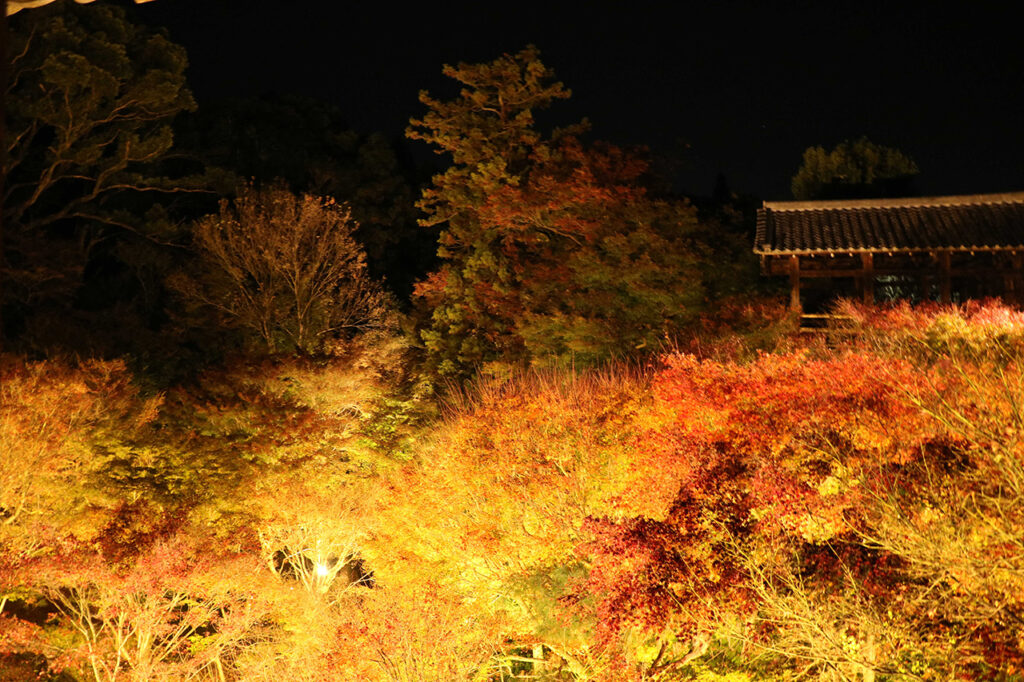

Best time to see/usually mid-November to late November
Visiting hours
April to end of October / 9:00 to 16:30 (last entry / 16:00)
First Sunday of November-December / 8:30-16:30 (last admission / 16:00)
First Sunday in December through the end of March / 9:00 - 16:00 (last admission at 15:30)
admission fee
Tsutenkyo/Kaizando/adults 600 yen, children 300 yen
Tofukuji Honbo Garden (Hojo) / Adults 500 yen, Children 300 yen
Tofukuji Honbo Garden (Hojo), Tsutenkyo Bridge, Kaisando (common admission ticket) / 1000 yen for adults, 500 yen for children
Autumn Special Viewing of Tsutenkyo Bridge/November 9, 2024 (Sat) - December 1, 2024 (Sun) Adults 1000 yen, children 300 yen
night viewing/November 16, 2024 (Sat) - December 1, 2024 (Sun) ¥2,800 *Full reservations required *For inquiries, please contact JR Tokai.
Kiyomizu-dera Temple is one of the representative temples of Kyoto, known for its Kiyomizu-no-Butai (stage of Kiyomizu).
From late November to early December, approximately 1,000 maple trees and mountain maples turn their leaves red, turning the temple grounds red. The contrast between the Okuno-in Temple and the main hall, known as the Kiyomizu-no-Butai (stage of Kiyomizu), is particularly striking. During the special nighttime viewing, the precincts are illuminated to create an ethereal atmosphere.




Best time/usually late November to early December
Visiting hours/6:00-18:00 (subject to seasonal variations)
admission feeAdults: 400 yen, Junior high school and elementary school students: 200 yen
Seijoin Special Viewing / November 18 (Mon.) to 30 (Sat.), 2024 9:00 - 16:00, 18:00 - 20:30 (last admission) 600 yen for adults, 300 yen for elementary and junior high school students
Special nighttime viewing / November 18 (Mon.) to 30 (Sat.), 2024 17:30 to 21:00 (last admission) Adults (high school students and older) 500 yen, elementary and junior high school students 200 yen
Officially called Zenrin-ji Temple, it was founded in 853 as a center for Shingon esoteric Buddhism by Shinshao-Monkazu, a disciple of Kobo Daishi (Kukai).
Since ancient times, the temple has been known as "Eikando of maple trees" and is famous for its autumn foliage. During the season, approximately 3,000 maple trees brightly illuminate the garden with its circular pond and the pagoda. In the fall, the temple holds an exhibition of temple treasures during the daytime, and at night it is lit up in turn.




Best time to see/ Usually mid to late November
Period/ Autumn Temple Treasures Exhibition November 11 (Mon) - December 8 (Sun), 2024
Light up Monday, November 11 - Sunday, December 1, 2024
Hours.Autumn Temple Treasures Exhibition 9:00-17:00 (last admission/16:00)
Light up 17:30 - 21:00 (last admission / 20:30)
ChargeAutumn Temple Treasures Exhibition ¥1,000 for adults, ¥400 for elementary, junior high and high school students
Light-up: 700 yen for junior high school students and older
Discounts for temple treasures are available for holders of disability certificates.
Need to present your passport at the counter (no discount is set for lights).
*The exhibition of temple treasures and the light-up are interchangeable (cannot be viewed continuously).
Kibune Shrine is dedicated to the deity Takakami-no-mikoto, who is in charge of water supply.
In early November, an arch of autumn leaves covers the approach to the shrine lined with vermilion-lacquered Kasuga lanterns, creating an exceptionally beautiful space. When the autumn leaves are lit up, the maple trees illuminated by the lights radiate a different beauty from that of the daytime.
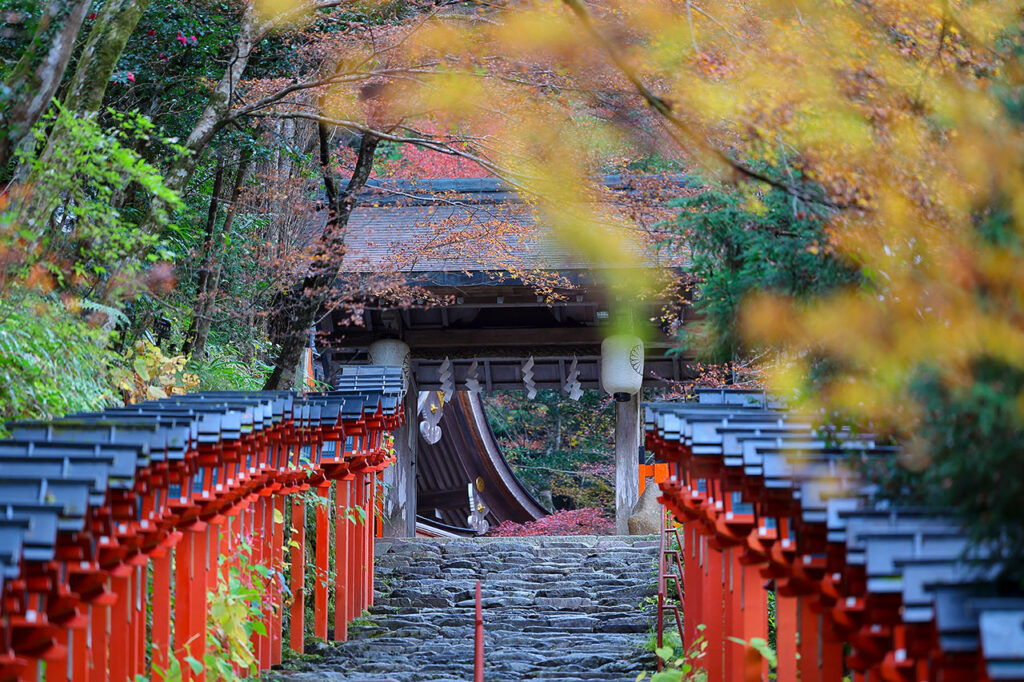



Best time to see/usually mid-November to late November
Hours of Prayer/ 6:00 - 20:00 (December 1 - 18:00 on April 30)
Autumn Special Viewing "Kibune Maple Lanterns in the Inner City of Kyoto"/November 1 (Fri.) - November 24 (Sun.), 2024, 6:00 - 20:30
admission feeFree of charge
Kitano Tenmangu Shrine is dedicated to Sugawara Michizane (Lord Suga), famous as the god of learning.
Lord Suga composed a poem, No. 24 in the Ogura Hyakunin Isshu (One Hundred Poems of Ogura), in which he expressed his admiration for the beautiful autumn leaves, which are as beautiful as brocade. The Doji, a palace built by Lord Toyotomi Hideyoshi in the Momoyama period (1573-1600), has become a popular "Maple Garden" with approximately 350 maple trees.


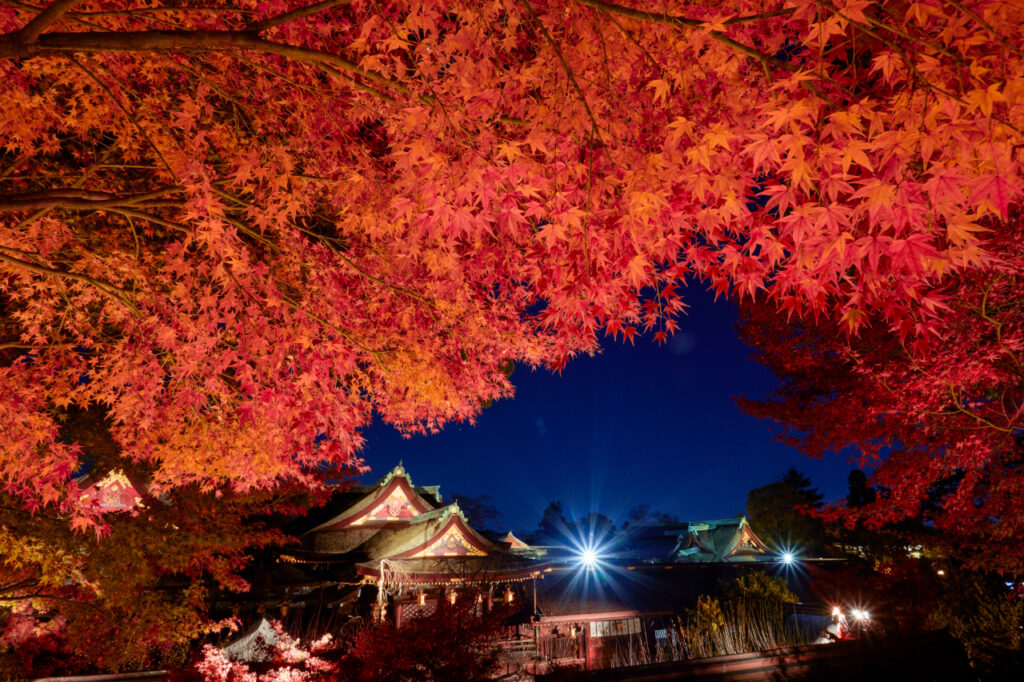

Best time to see/usually mid-November to early December
Visiting hours7:00 a.m. to 5:00 p.m.
Maple Garden" Autumn Special Open House / October 25 (Sat.) to December 8 (Sun.), 2024, 9:00 - 16:00 (last admission at 15:40)
Light up / November 9 (Sat.) to December 8 (Sun.), 2024 Sunset to 20:00 (last admission/19:40) *No day/night changeover
admission feeAdults 1200 yen, children 600 yen *includes tea cakes
A sightseeing train [Sagano Trolley Train] using the old JR San-in Line.
The 7.3-km train ride between Arashiyama and Kameoka, with spectacular scenery flowing past the windows of the train, is a continuous source of excitement. The dynamic and fantastic scenery of the Hozugawa River Gorge and the vividly colored autumn leaves seen up close from the train windows can be enjoyed in a luxurious way. The exhilaration of the windowless "The Rich," which is only one of the five cars in the train, is especially special. Don't miss the illumination of the Sagano Trolley Train, which makes the Hozugawa Gorge even more beautiful in the autumn foliage.


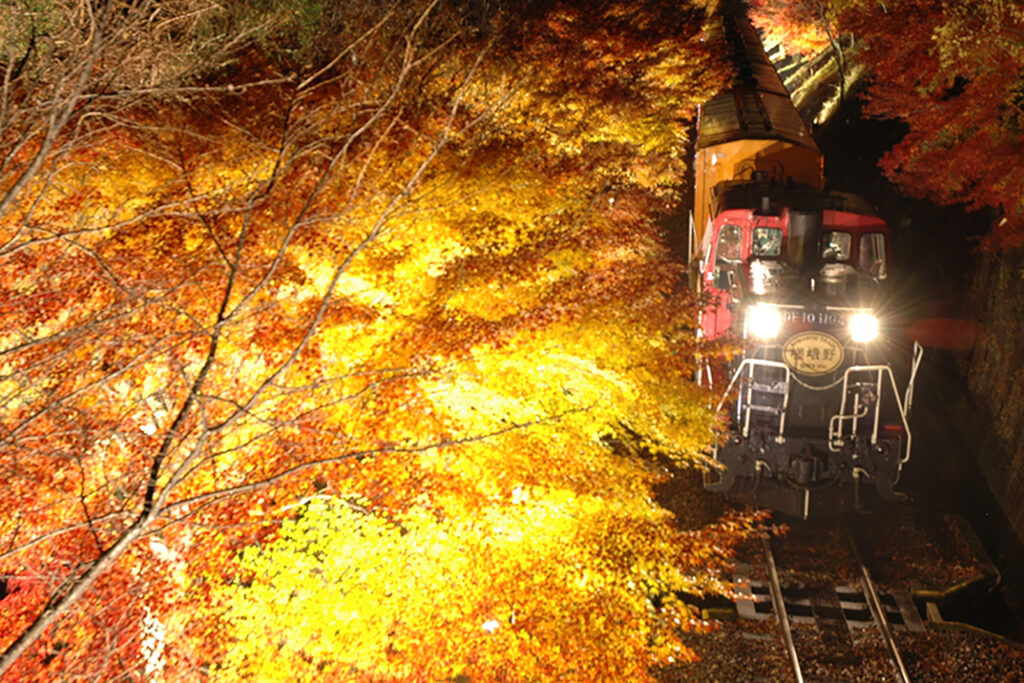

Best time to see/usually mid-November to early December
Operating hours/Official website operation scheduleThan
Fare: Adults 880 yen, children 440 yen
fantasy train of light
Operation Period / Saturday, October 12, 2024 - Sunday, December 29, 2024
Hours of Operation / From 16:30 at Trolley Kameoka Station to the last train.
Fare: Adults 880 yen, children 440 yen
This temple was founded by Ieyasu Tokugawa in 1601, and has the oldest Buddhist scripture woodcut in Japan. It is also known for its collection of prominent Japanese art, such as Unkei's "Sende Kanonzo" and Maruyama Oken's "Chikurinzu Byobu". Suryu Pond, which is said to be the oldest in Rakuhoku, and Suikinkutsu, which has a pleasant sound, are must-sees.
In addition, the autumn leaves and fresh greenery of the garden, which you can see from sitting in the study room, are as beautiful as a painting.
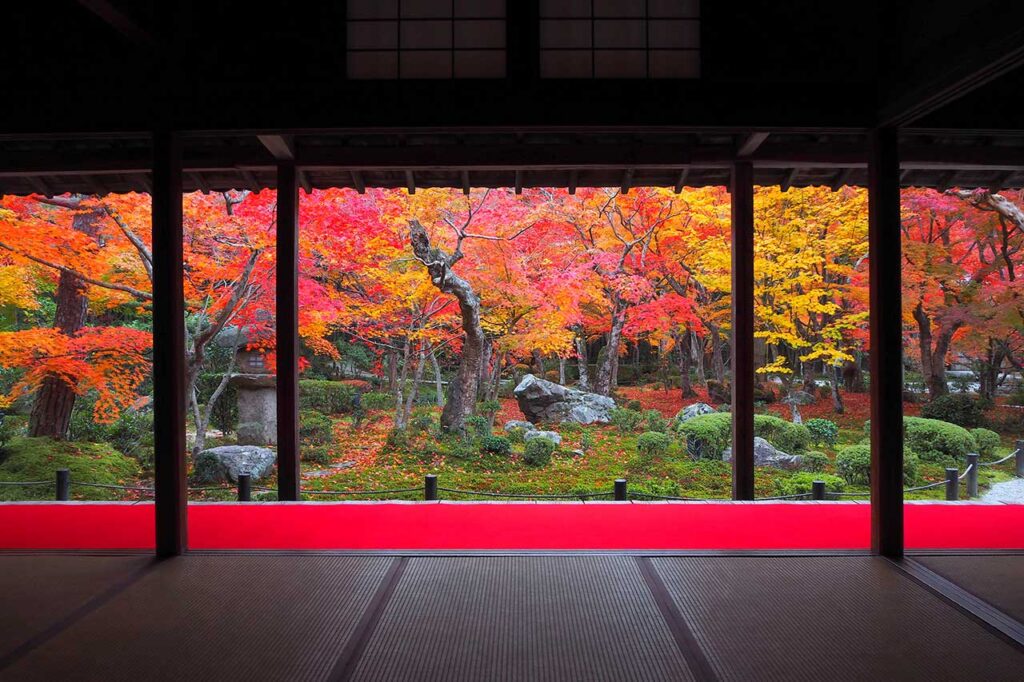



Best time to see/usually mid-November to early December
Special Autumn Foliage Viewing in 2024
Period of visitation: November 9 (Sat.) - December 8 (Sun.), 2024
Visiting hours/8:00-17:00
Entrance fee: 1,000 yen for adults, 500 yen for elementary, middle and high school students
[Normal visit]
Visiting hours/9:00-17:00
Admission: 600 yen for adults, 300 yen for elementary, junior high and high school students
Nijo Castle was built in 1603 by Tokugawa Ieyasu, the first shogun of the Edo shogunate.
Known as a famous autumn foliage viewing spot, a variety of trees such as ginkgo and maple trees beautifully change color. At night, "NAKED meets Nijo Castle 2024 - Autumn Harvest Festival -" will be held in commemoration of the opening of the Honmaru Palace. The Karamon Gate, an important cultural property, and the inner moat will be decorated with spectacular projection mapping, and the autumn leaves and Naked's digital art will color the venue.
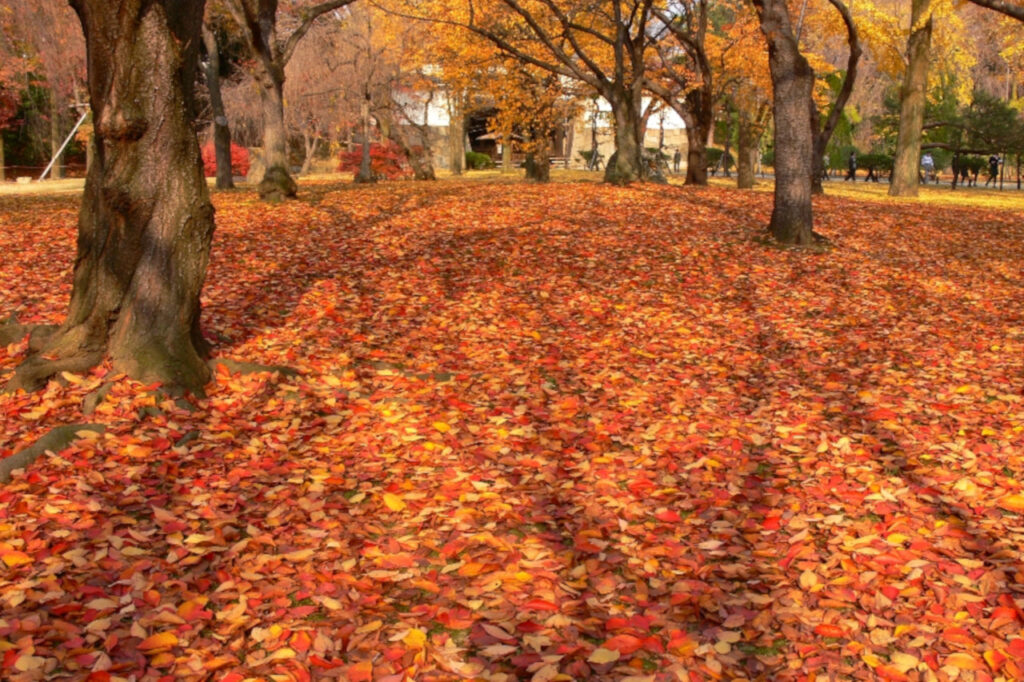



Best time to see/usually mid-November to early December
opening hours (of a castle, etc.)/ 8:45 - 16:00 (Closing time / 17:00)
Reception Hours for Ninomaru Palace/8:45~16:10
admission fee(Adults 1,300 yen, junior high and high school students 400 yen, elementary school students 300 yen (including admission to Ninomaru Palace)
Adult ¥1,000, Junior and senior high school students ¥300, Elementary school students ¥200 *Reservations required in advance.
Original paintings on the walls of Ninomaru Palace (Important Cultural Property) "From Aoi to Chrysanthemum: 'Shiroshoin' First and Second Rooms" (Original Paintings on View in Autumn)/October 10, 2024 (Thu) - December 8, 2024 (Sun) 9:00 - 16:30 (last admission 16:00) *100 yen extra
NAKED meets Nijo Castle 2024 - Autumn Harvest Festival -" in commemoration of the opening of Honmaru Goten to the public./ October 25, 2024 (Friday) - December 8, 2024 (Sunday)
18:00-22:00 (last admission 21:00) *Changing admission between day and night
Bishamondo] was formerly known as Izumo-ji Temple, which was built in 703 to the north of the Kyoto Imperial Palace by Emperor Temmu.
The sight of Teshizaka, the stone stairway leading to the Teshimon Gate, turning bright red is a sight to behold. Even after the best season has passed, visitors can enjoy the "Shiki-Momiji", commonly called "Shiki-Momiji", scattered along "Teshizaka".




Best time to see/usually mid-November to late November
Entry time/9:00-16:30 *Worship and red seals end around 16:00
Winter (Dec. 1 - Feb. 31): 9:00 - 16:00 *Visiting and red seal printing end at around 15:30
Admission fee/700 yen
Over 600 interviews per year! An order site carefully selected by the editors who knows Kyoto and Shiga.
nowOfficial LINE friend registration500 yen OFF coupon is being issued!
Distributed every Friday morning at 8:00 am! From new restaurant information to event information that we want to share with you, We deliver articles about Kyoto that are useful to know. About 20,000 people have registered.Click here to add a friend!
 News
News Feature article
Feature article Featured event
Featured event